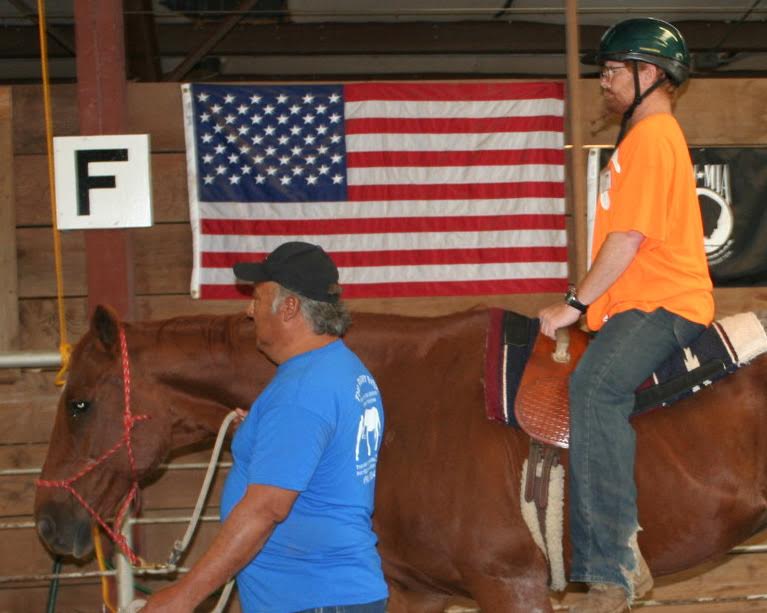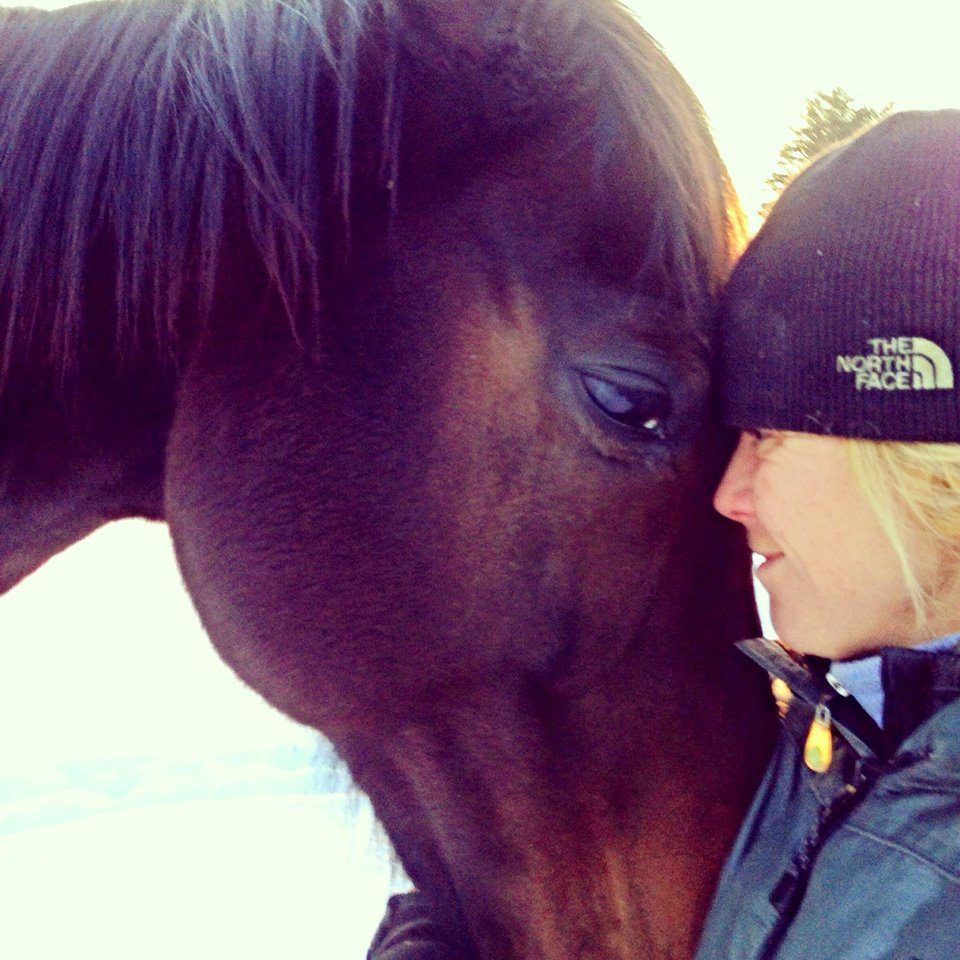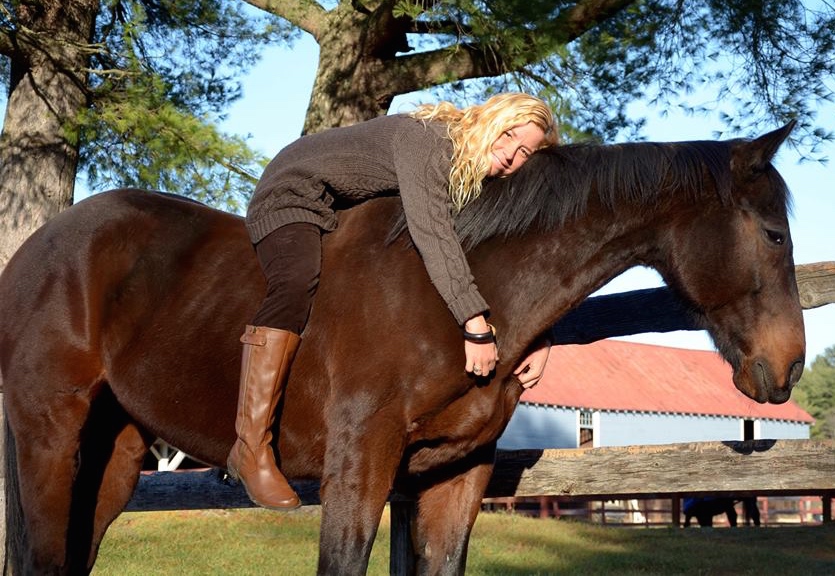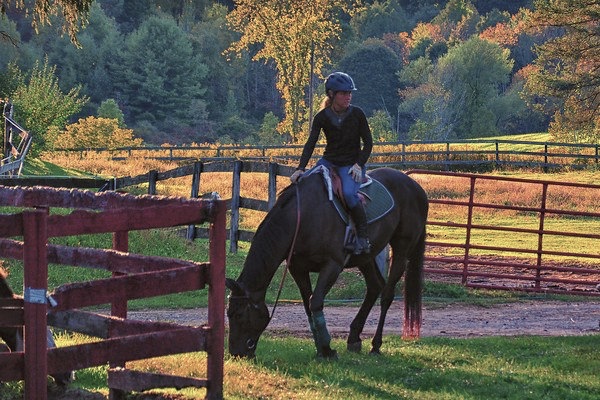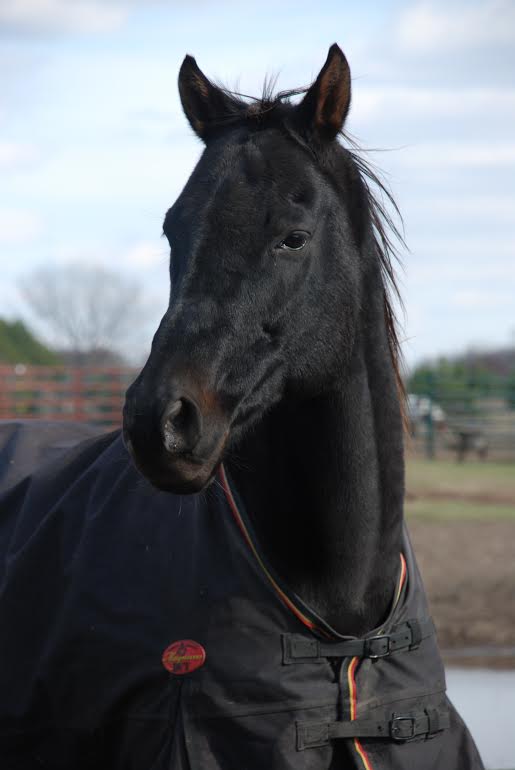
This beautiful OTTB gelding was rescued by the Fans of Barbaro in 2007, about a year after the Kentucky Derby winner broke down. Named Gunner, he is the spokeshorse for a new charity.
By the time the anonymous black Thoroughbred wound up in the trash heap years ago, he was destined, like so many, to fade into the obscure masses of slaughter-bound horses.
Nobody even knew his name.
And any so-called family connections—past owners, a breeder, or glamorous Thoroughbred pedigree — had faded just like his lip tattoo, which could have, were it legible, revealed his identity.
But the horse had friends.
Average folks— a golf pro, a biochemist, and others—were complete strangers until they watched with a nation as Kentucky Derby winner Barbaro broke down at the 2006 Preakness Stakes. And as the great, glamorous racehorse soldiered on through surgeries and heroic veterinary attempts to save him, these same caring individuals banded together to help the lesser known even unknowns of the equine world. Horses like that black racehorse, who but for the fact that Barbaro fans had formed a network to save horses in honor of the Derby winner, would have been lost.
“That horse is alive today because of Barbaro,” said Daryl Smoliak, founder of the newly created American Horse Rescue Network.
So as good luck would have it, by the time the this 17 year old throwaway horse turned up at the Yakima Auction in Washington in 2007, the network known as Fans of Barbaro was all over it, he said.
“A friend named Sherry Van Wagnor got a call from another friend in Washington. She was told a beautiful Thoroughbred was about to be loaded into a slaughter truck headed for Canada,” Smoliak said. “Sherry got in touch with this friend and said, ‘Whatever it costs, buy him.’ That was in November, 2007.”
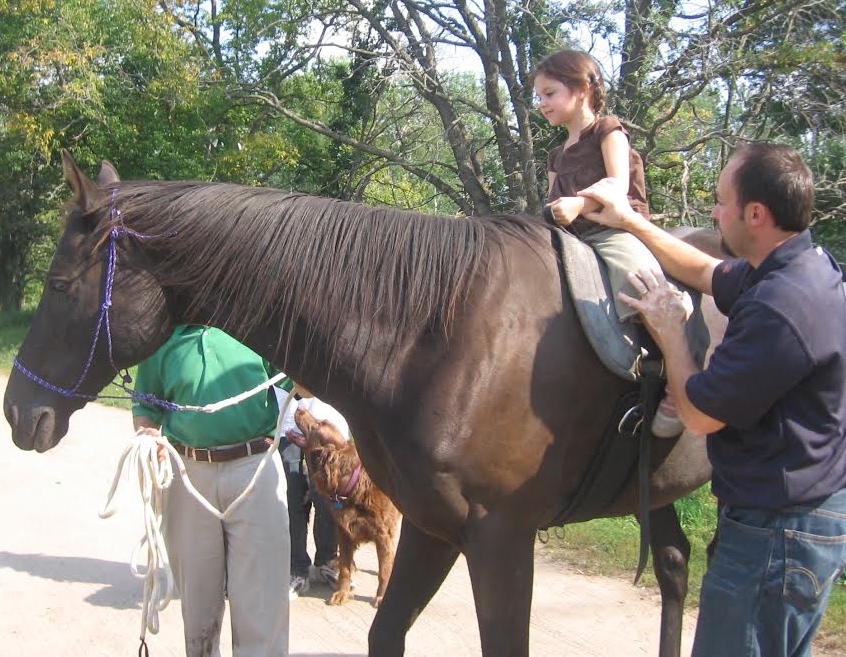
Gunner went from a frightened, biting, kicking wild man to a children’s pony.
A year later, after Van Wagnor sadly learned she had Leukemia, she called upon her good friends Smoliak and biochemist Margaret Bass, all members of Fans of Barbaro, and asked that they promise to take care of the beautiful horse. And the horse, now named Gunner, was sent to Minnesota to live with Bass in March 2008.
“When he arrived, he was really skinny and completely out of control,” says Bass, the treasurer of the new rescue. “He would bite and kick out because he was just so scared. I had horses as a child, but hadn’t been around them for a long time. So, I began by taking him out every day for a hand walk. Each time we went out, I’d take him further and further off the farm.”
One day a tree branch touched Gunner’s back, and he “exploded” in a frightening display of power and rage. Said Bass: “He obviously didn’t trust humans.”
But she didn’t give up on the horse. For the sake of the animal who needed an advocate, and in tribute to the memory of Sherry Van Wagnor, who saved Gunner, but eventually lost her own life to Leukemia in 2009, the march continued.
“Everything was a challenge with Gunner,” Bass says. “Our biggest one was getting him to walk into the indoor arena. He’d become so frightened he’d lather up. And then one day, I noticed he wasn’t scared.”
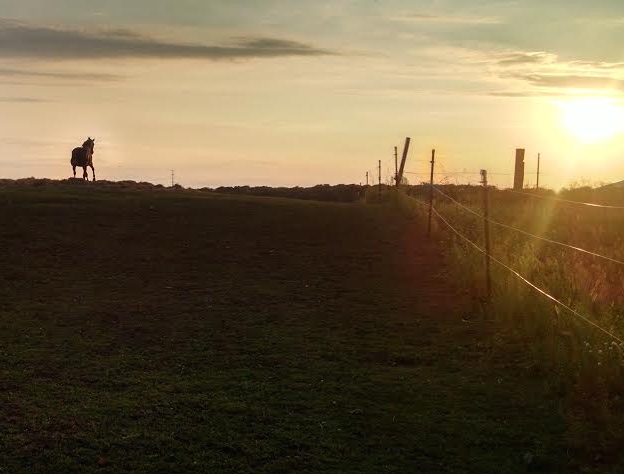
One small horse in the vast landscape, Gunner now represents the mission of a new charity.
Gone was the panic and pinned ears. In their place was a different animal, all filled-out in a shiny coat. Gunner now had happy eyes and the disposition of a child’s riding pony.
The transformation of Gunner resonated so strongly with Bass and Smoliak that last year the pair decided to formalize their efforts to help more horses. And push the boundaries beyond what they had helped accomplish in the name of Barbaro.
Acknowledging that Gunner is “alive today because of the overall Barbaro connection,” which drew friends from all walks of life into the horse welfare movement, Smoliak, a retired golf pro, founded nonprofit charity Horse Rescue Network in 2014. Its purpose, he says, is to raise funds for horses from everyday folks and from corporations outside the horse world, and to disseminate those funds to nonprofit horse charities.
“I’ve participated in many, many fundraisers during my years of teaching golf and doing tournaments. I played in a tournament every year to preserve waterfowl. And I can tell you that a lot of our sponsors were not associated in any way with waterfowl,” Smoliak said. “I think we can do something similar for horse fundraising. Horses helped make this nation great. They’re used by the police, and in programs to help returning soldiers. I think we all have an obligation to help them, not just the people in the horse industry.”

At age 27, Gunner has a new lease on life.
Years after Barbaro’s tragic injury at the Preakness Stakes united thousands upon thousands of fans and friends, Smoliak added that now is the time to cast the fundraising net beyond the horse industry.
“I believe Barbaro was a messenger for all of this. In his name, many have fought to end horse slaughter” and other practices that harm equines, he said. “Barbaro opened the door to a whole new world for me and countless others. But the majority of Americans still do not know about horse slaughter, or the fact that the Bureau of Land Management is managing our wild horses and burros into extinction. I think it’s now time to cultivate relationships outside of the horse industry, and take our message further.”
And Gunner, though not a household name like Barbaro, is just the horse to help carry that word.
“He represents everything American Horse Rescue Network stands for: proof that every life matters, that every life has a purpose and that every life has a right to live a dignified and honorable existence,” Smoliak says. “He came to us scared, angry and unruly. In our ‘throw away society,’ it’s understandable why someone would discard him. But with love and patience, Margaret worked with him and brought out the real soul that is Gunner! Isn’t this the lesson all humans should learn?”
